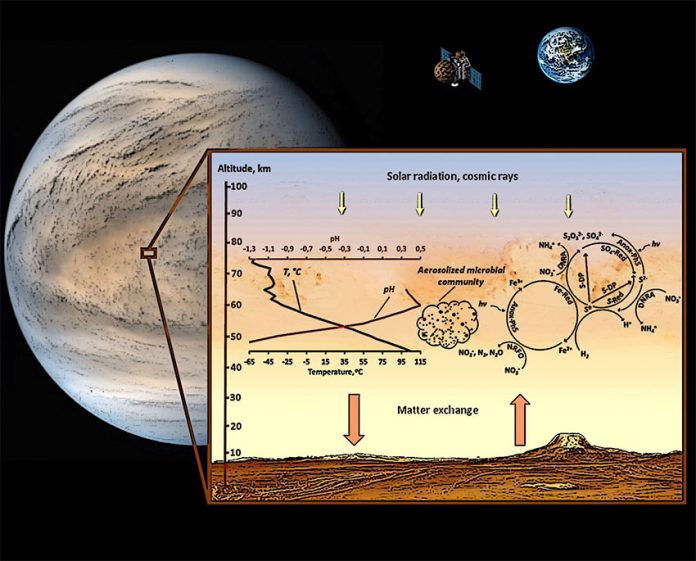Venus is the closest planet to the Earth and the brightest celestial body after the Sun and the Moon. Nevertheless, very little was known about Venus before the start of the space flight missions: the entire surface of the planet is hidden by dense clouds, which did not allow its exploration. The first data on the conditions on the Venus surface, obtained by spacecraft, revealed extremely high temperature (+ 470°C) and pressure (90 atm), absolutely unsuitable for the existence of Earth-type life. Nevertheless, the hope of detecting living organisms remains for the cloud layer of Venus, in which there is a fairly wide (20-25 km) zone, where the values of temperature and pressure are within those characteristic of terrestrial ecosystems, and fine water aerosols are considered as a possible habitat for hypothetical microorganisms. Two truly extreme parameters in this system are the utterly low pH, which is created by the presence of significant amounts of sulfuric acid in these aerosols, 75% and higher, and a very low water activity.
If we assume that Venusian organisms were able to adapt to such extreme conditions, then they can be involved in various biogeochemical cycles of elements and, primarily, cycles of sulfur and iron to gain energy for their living. Such a system can actively exchange matter with the surface as a result of various convection flows and volcanic processes.
Life on Venus could be originated due to natural evolutionary processes, similar to the generally accepted theory of the origin of life on Earth, or as a result of panspermia including transfer of terrestrial organisms.
The best analogs of the putative microbial system in the Venusian cloud layer are terrestrial clouds (ecological analog) and hydrothermal terrestrial and marine systems (metabolic analog). The latter are a great source of extremophilic microorganisms, some of which, by their physiological properties, can survive in the conditions of the cloud layer of Venus.
Meanwhile, the ideas of the existence of living forms in the clouds of Venus, different or even significantly different from the terrestrial analogs, as more adapted for survival in the extreme conditions of the cloud layer are considered.
Several space missions to Venus are currently planned. Astrobiological experiments are in particular included in the space program Venera-D developed by Roscosmos (launch is planned in 2028-2030), the purpose of which is to comprehensively explore the surface and the cloud layer of Venus. One of the intended goals is to detect various biomarkers in the cloud layer, or even microorganisms themselves, in order to try to answer the question: is there life on Venus?
References:
Kotsyurbenko O.R., Cordova Jr. J.A., Belov A.A., Cheptsov V.S., Khrunyk J., Kölbl D., Kryuchkova M.O., Milojevic T. Sasaki S., Słowik G.P., Snytnikov V., Vorobyova E.A. (2021) Exobiology of Venus clouds: new insights into habitability through terrestrial models and methods of detection. Astrobiology. V. 21, N. 9, 1186-1205. DOI: 10.1089/ast.2020.2296
Skladnev D.A., Karlov S.P., Khrunyk Y.Y., Kotsyurbenko O.R “Water–sulfuric acid foam as a possible habitat for hypothetical microbial community in the cloud layer of Venus” MDPI Life 2021, 11, 1034. https://doi.org/10.3390/life11101034



